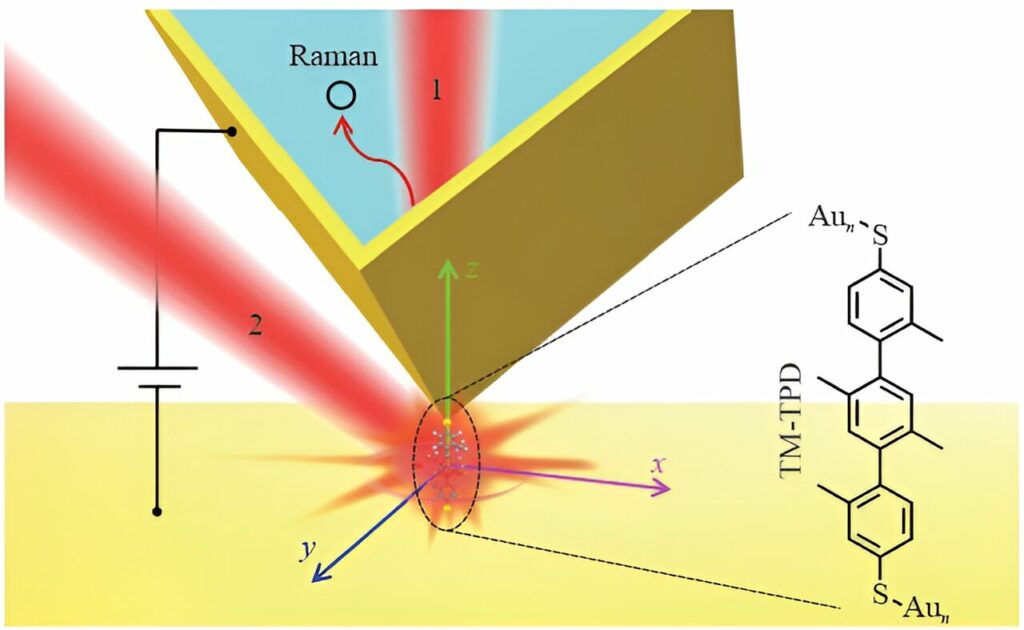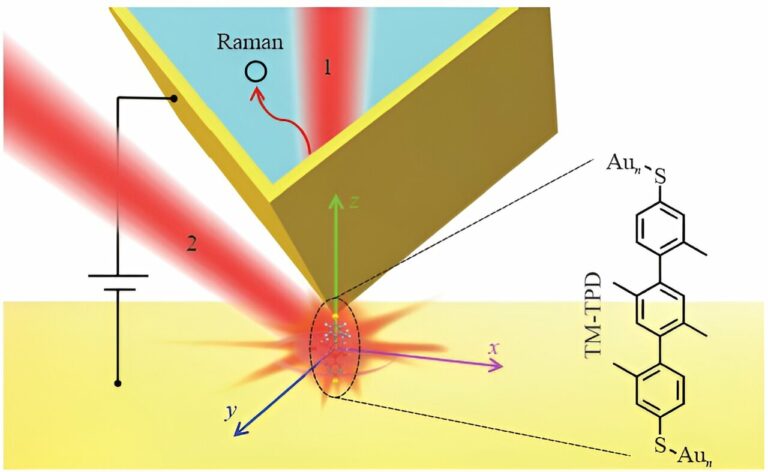A Raman Switch Driven by Optical and Electrical Signals at the Single-Molecule Level
The predominant association of molecular junctions in nanoelectronics lies in electronic transport, yet their widespread advancement is impeded by the challenge of precise characterization. While recent research has primarily delved into the electronic aspects of molecular junctions, it is essential to recognize the potential impact of light in characterizing molecular states comprehensively and influencing their behavior.
Despite the limitations of classical optical spectroscopy methods due to diffraction, near-field-enhanced techniques utilizing local surface plasmon (LSP) present a breakthrough by surpassing the diffraction limit and offering a viable solution for ultramicroscopy, especially in nano areas. In a recent publication in Light: Advanced Manufacturing, led by Dr. Hai Bi from Jihua Laboratory, China, a team of scientists introduced a groundbreaking single-molecular Raman switch. This switch is not only responsive to applied voltage but also to optical inputs from various directions.

The study specifically explored the combined effects of near-field optical angular momentum and bias voltage on the Raman response of a single molecular junction, resulting in the creation of a molecular switch. Utilizing a homemade molecular junction spectroscopy (MJS) platform, the study focused on the optical and electrically driven conformational switching within covalently linked metal–molecule–metal junctions of TM-TPD. This non-π-conjugated molecular ‘wire’ connected electrically between the gold-coated tip of a tunneling microscope and a gold substrate exhibited controllable switching behavior. The Raman activity of the molecule was observed to be modulated not only by biased voltage, as previously confirmed, but also by an optical input.
The investigation highlighted the influence of both light polarization and the symmetry properties of the electromagnetic near field in controlling the switching behavior. This modification in the Raman response was attributed to a change in the conformation of the TM-TPD molecule. By altering both the illumination side and the applied voltage, the Raman intensity could be toggled between ON and OFF states, displaying a significant difference of nearly five orders of magnitude. Importantly, the study revealed that the conformational changes in molecular junctions could be driven not only by the applied voltage but also by the optical angular momentum in the enhanced near field, facilitated by the plasmon gap mode in the junction.
High bias voltage induced electron density rearrangement, activating the Raman mode, which was further enhanced by planarization and increased π-conjugation of the TM-TPD molecule. The angular momentum of light, acting as a z-axis torque in the presence of asymmetric electromagnetic field distribution, played a pivotal role in altering the molecular conformation, disrupting electron density rearrangement, and ultimately suppressing the Raman mode. This study establishes the experimental connection between optical angular momentum and molecular switching, shedding light on new avenues for exploring molecular logic and optical angular momentum in the near-field regime. The demonstrated capability to address physicochemical phenomena with single-molecule resolution paves the way for a new era of nanomechanical studies utilizing MJS setups. Technologically, these findings showcase single-molecule monitoring and manipulation with exceptional control, heralding exciting possibilities for multi-logic single-molecule computing.
This article is republished from PhysORG under a Creative Commons license. Read the original article.
Do not forget to share your opinion with us to provide you with the best posts !





0 Comments